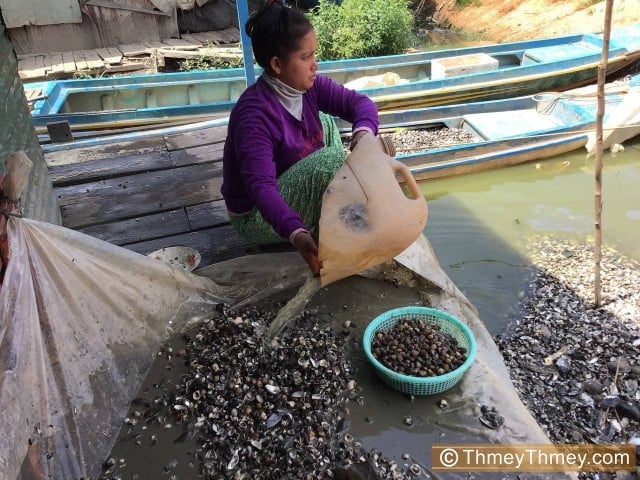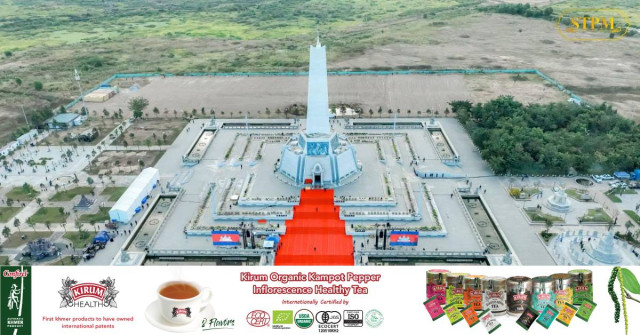Floating Village Residents Quit Fishing to Forage for Clams as Water Drops at Tonle Sap Lake

- Isa Rohany & Teng Yalirozy
- May 31, 2021 9:02 AM
Despite having long survived on the bounties of the Tonle Sap Lake, the residents of Chong Khneas floating village have abandoned their traditional trades due to a rapidly changing environment.
SIEM REAP--Residents of the Chong Khneas area have swapped out their traditional fishing for clam foraging.
The shift has been linked to a significant year-on-year drop in fish catches, largely believed to be linked to climate change, deforestation and the construction of hydropower dams upstream of the Tonle Sap Lake.
The Chong Khneas floating village was, until the COVID-19 pandemic, a booming tourist attraction famed for beautiful sunsets and a unique way of life. But in the wake of the pandemic, Cambodia’s tourism industry has all but collapsed and the incomes available to Chong Khneas residents has vanished with it.
Now, with no tourists to ferry about and no fish to catch due to an unnaturally elongated dry season, residents are growing desperate.
Boats both large and small now sit idle, some rotting, as the once vibrant fishing village has been reduced to a shadow of its former self. The drop in tourists, residents say, has led to over-fishing.

Yong Yoeum has been fishing for years, but despite spending most of his life perfecting his craft, he has been forced to abandon it.
“Now the fish are scarce, I’ve had to turn to clams—it’s actually easier than fishing and the market is better,” he explained.
Yoeum said he is collecting around 100 kilograms of clams each day, which he sells for around $25.
Another fisherman turned clam forager, Orn Krem, said he had been foraging for clams for only a year, adding that the shallower waters in their fishing village has reduced the habitat for fish and reduced their breeding grounds significantly.
Krem said that he often travels up to Prek Toal floating village near Battambang Province to find clams and most days, he sells around 100 kilograms at 1,000 riel—$0.25—per kilogram which helps him net almost $25 each day.
As many as 10 families in Chong Khneas are now foraging for clams full-time, according to Commune Chief Oum Nary.
“It’s eased their burden, especially now that the fish are so scarce,” said Nary. “But I worry that the equipment used to catch the clams could affect the biodiversity of Tonle Sap Lake.”
However, at the rate of foraging currently being conducted in Chong Khneas, the risk posed to the environment is low.
Prin Savin director of Siem Reap Provincial Fisheries Administration said that only industrial clam collecting is prohibited, but families like those in Chong Khneas can continue to forage all year round.
Additional reporting by Isa Rohany















